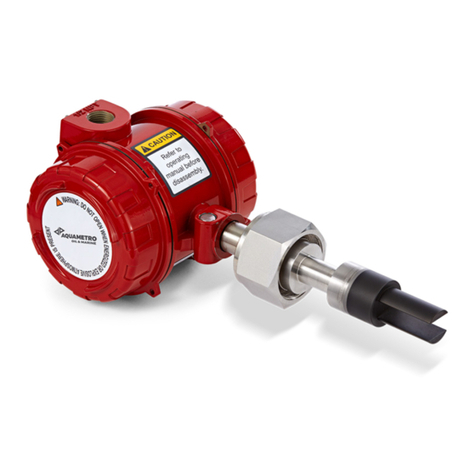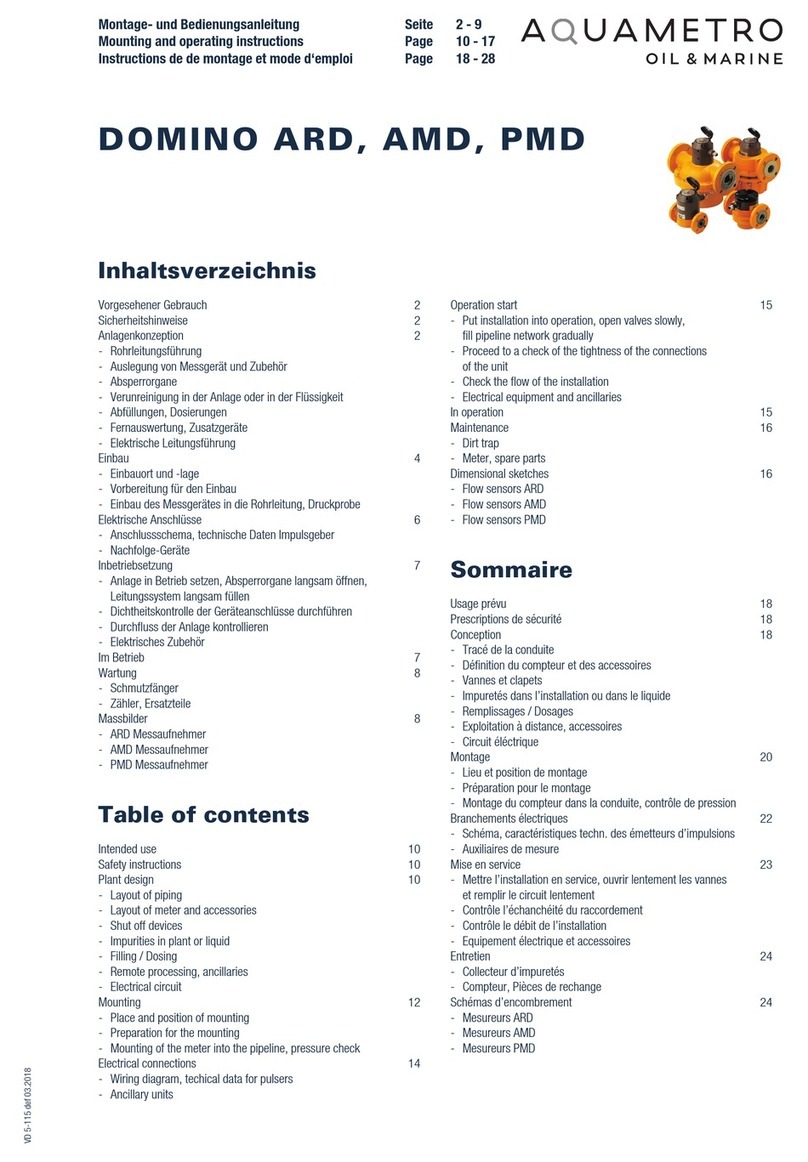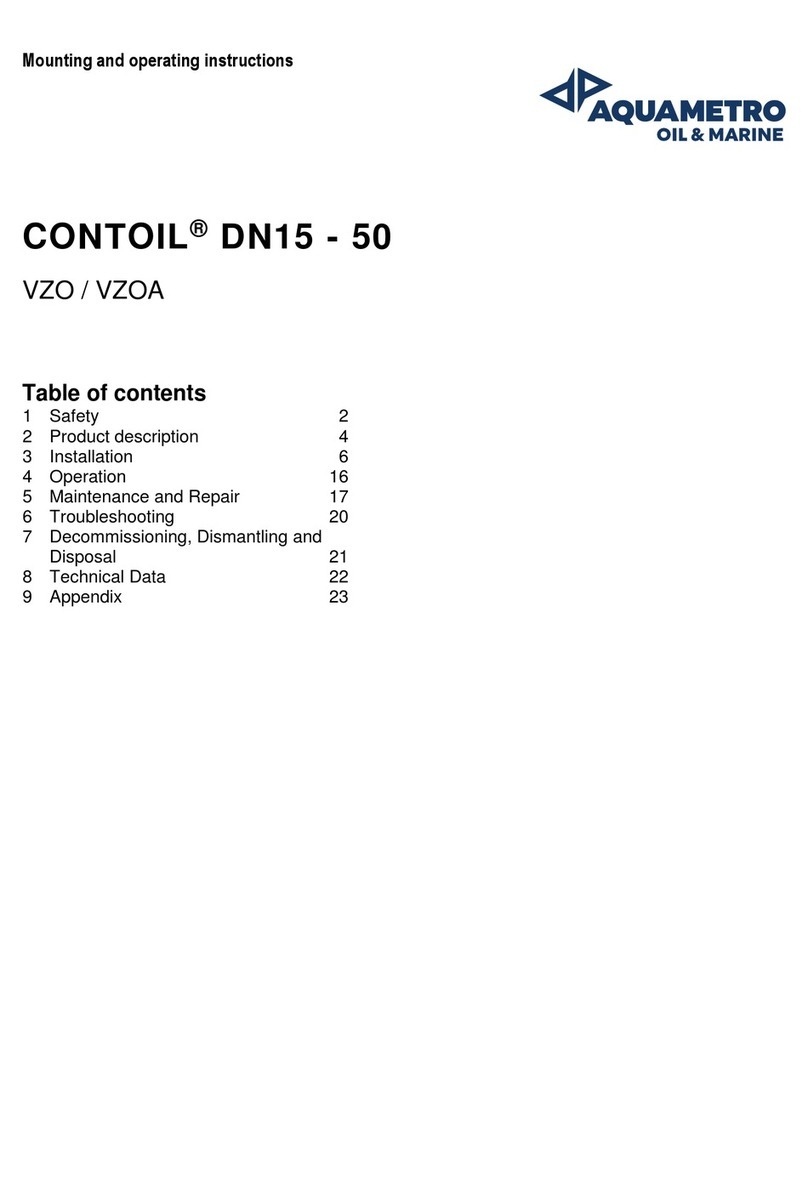2 VI 14-419 def 07.2017
Inhaltsverzeichnis Index of contents Sommaire
GERÄTEAUFBAU / METER CONFIGURATION / STRUCTURATION DES COMPTEURS ...............3
ZUSÄTZLICHE ANLEITUNGEN /SUPPLEMENTARY INSTRUCTIONS /MANUELS D'INSTRUCTIONS COMPLÉMENTAIRES .......3
MESSKAMMERVERSION /VERSION OF MEASURING CHAMBER /TYPE DE CHAMBRE DE MESURE....................................3
CONTOIL®MESSAUFNEHMER FÜR / FLOW SENSORS FOR / MESUREURS POUR: VZF(A) II /
VZO(A)................................................................................................................................................4
CONTOIL®MAINTENANCE SET .......................................................................................................4
SCHRAUBEN-ANZUGSDREHMOMENTE / SCREW TORQUE / SERRAGE DES VIS......................4
ZÄHLER MIT MESSUMFORMER UND MULTIFUNKTIONSANZEIGE / METER WITH
TRANSDUCER AND MULTIFUNCTIONAL DISPLAY / COMPTEURS AVEC AFFICHAGE
MULTIFONCTIONS ET SORTIES PARAMÉTRABLES VZF II / VZFA II............................................5
VZF(A) II...............................................................................................................................................................5
UMBAU EINES ZÄHLERS ..........................................................................................................................................5
MODIFYING A METER ..............................................................................................................................................5
MODIFICATION D'UN COMPTEUR...............................................................................................................................5
ZÄHLER MIT ROLLENZÄHLWERK / METERS WITH ROLLER REGISTER / COMPTEURS AVEC
TOTALISATEUR À ROULEAUX ........................................................................................................6
VZO MAX.130°C...................................................................................................................................................6
ZÄHLER MIT ROLLENZÄHLWERK / METERS WITH ROLLER REGISTER / COMPTEURS AVEC
TOTALISATEUR À ROULEAUX ........................................................................................................7
VZO MAX.180°C...................................................................................................................................................7
ZÄHLER MIT ROLLENZÄHLWERK / METERS WITH ROLLER REGISTER / COMPTEURS AVEC
TOTALISATEUR À ROULEAUX ........................................................................................................8
VZO… RV MAX.130°C..........................................................................................................................................8
ZÄHLER MIT IMPULSGEBER RV / METERS WITH PULSER RV / COMPTEURS AVEC
EMETTEUR D'IMPULSIONS RV ........................................................................................................9
VZO… RV MAX.180°C..........................................................................................................................................9
ZÄHLER MIT IMPULSGEBER RV / METERS WITH PULSER RV / COMPTEURS AVEC
EMETTEUR D'IMPULSIONS RV ......................................................................................................10
VZOA RV 130 &180°C...................................................................................................................................... 10
VZO/VZOA ZÄHLER MIT IMPULSGEBER IN / METERS WITH PULSER IN / COMPTEURS AVEC
EMETTEUR D'IMPULSIONS IN........................................................................................................11
ABBILDUNGEN / FIGURES / FIGURES...........................................................................................12
FEHLERANALYSE...........................................................................................................................13
REPARATURANLEITUNG UND FEHLERBEHEBUNG.................................................................................................... 14
SICHERHEITSHINWEISE ........................................................................................................................................ 14
REPARATURANLEITUNG MESSAUFNEHMER............................................................................................................ 14
REPARATURANLEITUNG AUFBAUGRUPPEN ............................................................................................................ 14
FAULT ANALYSIS............................................................................................................................15
REPAIR INSTRUCTIONS AND TROUBLE SHOOTING................................................................................................... 16
SAFETY NOTES.................................................................................................................................................... 16
REPAIR INSTRUCTIONS FOR MEASURING SENSORS ................................................................................................ 16
REPAIR INSTRUCTIONS FOR ANCILLARIES.............................................................................................................. 16
DÉPANNAGES.................................................................................................................................17
INSTRUCTIONS POUR RÉPARATIONS ET DÉPANNAGES ............................................................................................ 18
RECOMMANDATIONS EN MATIÈRE DE SÉCURITÉ..................................................................................................... 18
INSTRUCTIONS DE RÉPARATION POUR MESUREURS................................................................................................ 18
INSTRUCTIONS DE RÉPARATION POUR DISPOSITIFS COMPLÉMENTAIRES.................................................................. 19


































